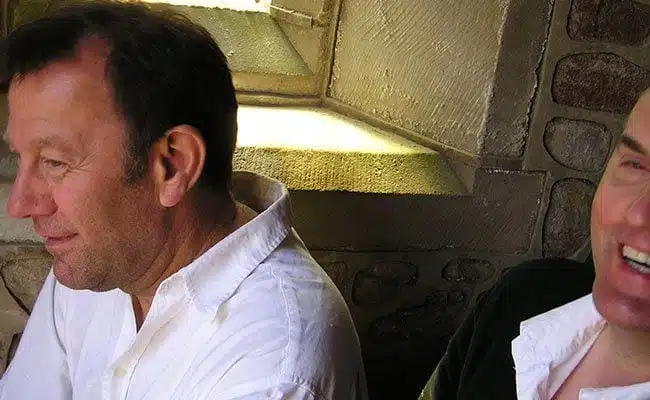
People forget. Later, they make things up. Collective memories of music in the ’80s are a case in point. Narratives outlining the “dominance of synthpop” are inaccurate in that the US music charts, college radio playlists, and commercial radio playlists all tell different stories. Further, tales of synth-pop’s alleged ’80s dominance tend to leave out the most interesting aspects of the genre’s history: it’s beginnings in post-punk experimentation and Krautrock influence. Yes, synthpop became a major commercial force in the second half of that decade, and its proponents now dominate collective nostalgia for that era, but before it became the technicolor pill MTV convinced so many to swallow, the genre was home to some of the era’s most inventive and adventurous artists.
A few, like Human League and Depeche Mode, made major commercial breakthroughs while others, like Orchestral Maneuvers in the Dark and Heaven 17, are remembered as one-hit-wonders. And then there are those like Eyeless in Gaza, to whom the US market never really opened. Cherry Red’s two-CD compilation Picture the Day (A Career Retrospective 1981-2016) may finally provide a moment in the sun for this deserving and stubbornly persistent band.
Martyn Bates and Peter Becker formed Eyeless in Gaza in 1980 around a minimalist principle that sought to, as Bates explains in the anthology’s liner notes, “delve right into the core of the music and into the grist of the words… to explore it and yet not ‘do something’ with it.” The purpose was to create a “skeletal picture” that would leave space for the listener to insert themselves, he explains: “It somehow invites greater participation.”
Listening to many of the tracks on the first disc, which collects songs recorded between 1980 and 1985, the space Bates refers to is indeed an identifying feature, particularly on the earliest pieces. Both the instrumentation and vocals create moods as much through the space between the sounds as in the sounds themselves. 1981’s “Invisibility” builds a rubbery groove out of picked guitar strings and a tinny synth drum; meanwhile Bates sings in monosyllables, breaking up individual words into units of disjointed sound/meaning. So, too, in “Still Air”, where Bates spits, slurs, and shouts his lyrics, sometimes adding syllables to string a word out for emphasis, like turning “relevant” into seven syllables. These songs almost resist flow, requiring the listener’s close attention to understand or, even, create their meaning.
It doesn’t take long for a more nuanced pop sensibility to guide the work. Both 1983’s “Corner of Dusk” and 1984’s “Inky Blue Sky” feature less-angular lyrics, with Bates building fragments into complete thoughts, and fuller-sounding mixes of cohesive electronic melodies. “Back From the Rains” (1985) could even be termed stadium pop, and might be weaker for it. Yet there’s also, in the first gathering of songs before their late-decade hiatus, a consistent restlessness and unwillingness to be confined to a specific style as witnessed by tracks like “Falling Leaf / Fading Flower” with its mix of saxophone skronk and delicate synthetic strings, or the beautiful broken jack-in-the-box manipulation of “Jane Dancing”.
Picture the Day’s second disc features recordings from their reformation in 1993 to the present. If there’s a less overtly experimental aesthetic to the songs on the second disc, that is not to say that Bates and Becker have become content to follow any singular formula. Mid-’90s cuts like “Struck Like Jacob Marley” or “Twilight Walking” still roil with a mix of darkness and light. Meanwhile, “Lord Gregory” and “Lullay My Liking”, from 2000’s Songs of the Beautiful Wanton, find the pair folding ancient British folk traditions into their sonic philosophy with beautifully disquieting results. Instrumental “You Know Nothing” (2014) evokes their earliest work as if through a cloud, the tape loops and clarinet shrieks overtaken by chiming guitars. “Tamarisk”, the most recent cut in the collection, introduces new flourishes to the Eyeless in Gaza sound with its Middle Eastern inflections.
The sequencing of this collection is smartly done, enabling listeners to understand the breadth of this band that compiler Richard Anderson calls “a difficult entity to pin down, mutating and restless, direct and assured, yet crystalline and fragile.” This is an apt description of the collective and the times that birthed them. Post-punk turned to new wave fairly quickly. One can hear the struggle and strain of this transition in Eyeless in Gaza’s 1980-85 works more so than many other bands of their time. If their unwillingness to be pinned down compromised their commercial prospects, it had the opposite effect on their quality. That they returned and have, for 20 years, continued to build on that foundation in interesting and listenable ways justifies their sizeable cult audience and argues for a broader audience.
This anthology is a reminder that, while they may not have received due notice at the time, Eyeless in Gaza is an important band to the development of synth-pop. Further, where others of that era now trade in nostalgia, Bates and Becker continue to make adventurous, rewarding music that explores and even breaks the bounds of the genre.


